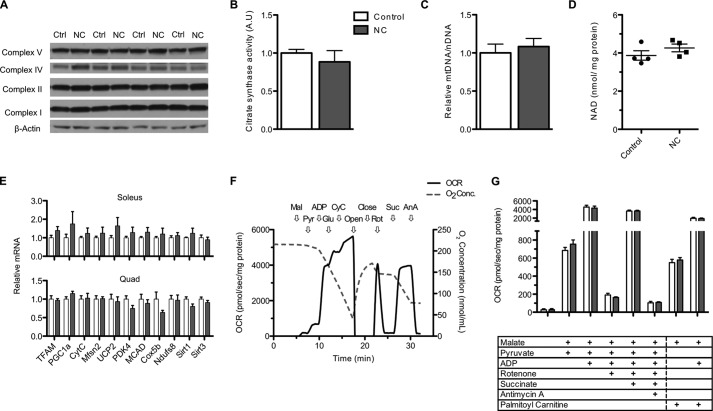FIGURE 2.
NAMPT overexpression does not improve muscle oxidative function. A, Western blot of representative components of the electron transport chain complexes in gastrocnemius muscle. B, citrate synthase activity in whole tissue lysates of quadriceps muscle (n = 3–4 mice per group; A.U., arbitrary units). C, relative mtDNA/nDNA ratio in quadriceps muscle (n = 7 per group). D, NAD content in mitochondria isolated from pooled hind limb muscles (n = 4 per group). E, mRNA expression of transcripts related to oxidative function in soleus and quadriceps (quad) muscle measured by quantitative RT-PCR (n = 6 per group). F, representative trace of oxygen consumption rate (OCR; left axis) and chamber oxygen concentration (right axis) of mitochondria isolated from control skeletal muscle. Arrows indicate sequential addition of malate (Mal), pyruvate (Pyr), ADP, glutamate (Glu), cytochrome c (CyC), rotenone (Rot), succinate (Suc), and antimycin A (AnA) as well as opening and closing of the chamber to atmospheric oxygen. G, oxygen consumption rate of mitochondria isolated from skeletal muscle and provided with respective substrates and inhibitors (n = 4 per group). White and gray bars represent control (Ctrl) and NC groups, respectively. Error bars represent S.E. No changes are significant by Student's t test. Mice were aged 5–7 months.

